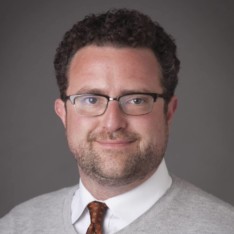The Struggle to Save Money
In previous blog posts, I’ve discussed some reasons Americans spend more and save less than they should or even plan to. The implicit assumption in these discussions was that they had the option — in other words, that they had the resources to achieve some level of financial wellness.
But as my upcoming brief in January shows, that only includes about half the population. The other half of Americans cannot afford to set aside the money needed to be resilient to financial shocks and prepared for the future.
For the purposes of the work, I look at three major components of what are termed financial wellness: short-term liquid savings, longer-term savings and investment, and not having or paying off debt. I look at this question of who can “afford” financial wellness by simulating the budgets of young, single Americans. I estimate how much so-called discretionary income they have by subtracting out taxes and the cost of living for basic necessities (not including things like meals out, vacations, or home appliances). We’re then left with so-called discretionary income. That money can be saved or invested, or it can be spent on the type of lifestyle goods mentioned above.
I go over multiple plans in the brief, but here I’ll focus on putting 10 percent of one’s income toward the financial goals listed above. For instance, under this plan an individual could build an emergency savings fund equal to three months’ salary (a level recommended by some experts) in two-and-a-half years, before turning to longer-term investing goals such as retirement. Many experts recommend putting away more than 10 percent, but it’s a modest start.
I estimate that the median 30-year-old with annual income of $35,600 would likely do fine with this rule; put away 10 percent and he or she would still have $250 per month for meals out, vacations, or saving for a down payment on a home. However, moving not that far down the income distribution, those below the 43rd (about $32,000) percentile of income could not afford this plan while living even a modest lifestyle. And we haven’t even considered debt: Give that median earner the average American’s credit card debt, and he or she would no longer be able to afford the 10 percent rule.
It’s staggering to think that almost half of Americans (many defined as middle class) cannot afford to set aside the money required to achieve what’s being called financial wellness. But there’s a second group deemed financially well, who could afford to put the money away but do not. For instance, well over half of earners in the top quartile do not have the recommended amounts of money in short-term savings. It’s important to estimate the relative size of these two groups because they need different assistance in addressing the problem. Those who can afford financial wellness may benefit from “nudge” type rules like making investing in a 401(k) the default option. But the group that cannot afford to set the money aside likely needs investment in human capital, as well as real discussion from experts that provide help about more modest goals that would help more people set at least some money aside.
Click here to sign up for the Daily Economy weekly digest!











